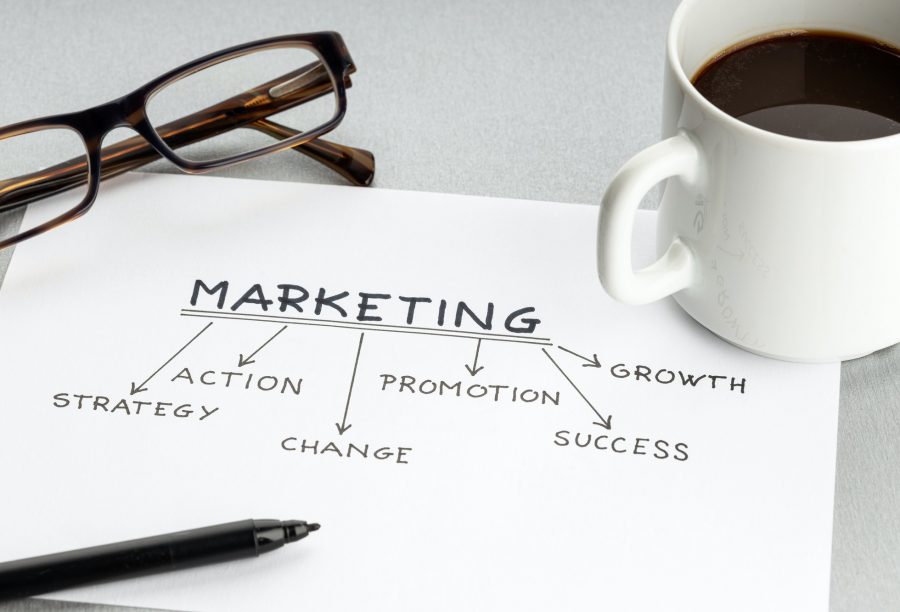
Estimated reading time: 8 minutes
Digital marketing should be an essential part of every SaaS business’ overarching promotion strategy. In fact, research has shown that SaaS companies can see an ROI of over 700% on email marketing and SEO. If you fail to utilize this promotion channel, you likely won’t ever be able to truly compete with similar businesses (who are, in all likelihood, increasing their digital marketing spend every year).
Let’s take a look at the best way to develop a digital marketing strategy and the steps you need to take to ensure it works.
Related Links
Start With A Clear Goal
You will first need to determine what you want to achieve with your digital marketing campaigns. For instance, you may be looking to increase free trial user conversions, or you may just want to grow your email list.

Knowing what your goal is will help you make all the important decisions later on: which channels to invest in first, how to design a sales funnel, where to save money, and where to spend more.
Be as clear about your marketing goals as possible. Assign tangible (and realistic) numbers to each goal and give yourself a specific timeframe in which to achieve it.
Determine The Metrics You Want To Track
In order to understand if your efforts are paying off or not, you will also need to set some very clear KPIs and track a variety of marketing metrics for each of the tactics you decide to use. These figures will later help you determine the value of your business as well in case you want to sell it or attract investors.
Conversion rates and engagement rates are something every business tracks, but as a SaaS company, you will also need to pay attention to:
- Your churn rate.
- The cost of customer acquisition and their lifetime value.
- The rate of monthly to yearly conversions.
When you first start out, don’t obsess over these numbers too much. However, make sure that they are moving in your favor as time goes by and you roll out your strategy. Don’t compare yourself to any industry benchmarks – instead, focus only on your own results from the previous period.
Understand Your Customers’ Needs
In order to be able to market to your target audience, you also need to understand what their pain points are and what makes them tick, so to speak. If you don’t speak their language, or if you’re constantly focusing on solutions that they are not actively seeking, you won’t go very far with your digital marketing strategy.

Let’s take a look at a concrete example. As a brand, Aura understands that its customers want to improve their Amazon sales. This is why Aura’s blog is full of articles that aren’t just specific to repricing (which is what their product is) but also offer more general tips and advice.
They have demonstrated that they understand their readers and users and will do more than just try to make a sale. You should apply the same principle: focus on solving problems and establishing yourself as a resource rather than just on getting more people to pay a subscription.
Focus On Benefits Over Features
As a SaaS business, you need to focus on benefits-based marketing rather than highlighting the features of your product.
While it may sound very harsh, you need to understand that most customers won’t care one bit about the features of the product in a general sense. They will want to know what the benefits of these features are for them specifically.
While there is no way to avoid talking about the features, always show them from a benefits angle. “Here is what our product does, and here is exactly how it will help you” is the point of view you’re aiming for.
Take A Look At Your Competition
In order for your digital marketing tactic to work its full magic, you also need to know what your competitors are doing to promote their own products. You don’t need to copy or try to beat them at their own game, though.
Aim to understand their appeal and the way they are converting their customers. Determine what they are offering and what they are missing out on. Then, use this information to craft better messaging and better products.
You can grab some of their keywords and backlinks, but don’t just focus on outsmarting them at the same game. Create your own strategy, informed by what is currently available.
Design A Clever Conversion Funnel
Creating a sales funnel will help ensure you are sending the right messages to the right people at the right time. If you promote a very complex tech piece to a TOFU user, you will have practically zero chance of getting them to become a paying customer.
If you offer a free trial, you can segment your funnel into two distinct stages or create several funnels. One stage or funnel will be for getting people to try your product, and the other will be for ensuring they subscribe. From there, you can further move them down to becoming brand advocates and paying for yearly subscriptions.
Make sure you focus on each stage equally, as customer retention is more valuable than customer acquisition. Plus, it’s easier to execute.
Keep Improving It

Finally, don’t forget that your digital marketing strategy needs to continually evolve and change based on the data that you collect over time. You may discover that a certain tactic is working much better than you could have anticipated or that a channel that has worked well for your competitors does nothing for you.
Do regular audits and data sweeps, and see what you need to change (if anything). Don’t just blindly keep going through the same motions. Marketing is highly dynamic, and you need to be able to roll with the times for it to truly succeed.
Key Takeaways: Mastering Digital Marketing for SaaS Success
- Strategic Goal Setting: Start by defining clear, realistic goals for your digital marketing campaigns. Whether it’s increasing free trial conversions or growing your email list, having a well-defined mission guides your decisions and resource allocation.
- Metrics Matter: Establish Key Performance Indicators (KPIs) to track the success of your efforts. Beyond traditional metrics, pay attention to crucial indicators like churn rate, customer acquisition cost, and monthly to yearly conversion rates for a comprehensive understanding of your business’s health.
- Customer-Centric Approach: Understand your audience’s needs and pain points. Tailor your content to provide solutions and position your brand as a valuable resource. Speaking your customers’ language fosters a deeper connection and drives meaningful engagement.
- Benefits Over Features: Shift your marketing focus from product features to customer benefits. Clearly communicate how your SaaS solution addresses the specific needs of your audience. Presenting features through the lens of tangible benefits resonates more effectively with potential customers.
- Competitive Analysis for Innovation: Study your competitors to identify strengths and weaknesses. Use this insight to innovate rather than imitate. Craft a unique strategy that sets your brand apart, combining industry knowledge with your distinctive value proposition.
- Conversion Funnel Optimization: Design a conversion funnel tailored to your audience segments. Whether guiding users through a free trial or subscription process, a well-crafted funnel ensures your messaging aligns with their position in the customer journey.
- Continuous Improvement: Digital marketing is dynamic. Regularly audit and adapt your strategy based on real-time data. Embrace change, refine your approach, and stay agile. The ability to evolve is crucial for sustained success in the ever-changing marketing landscape.
Embark on your journey to digital marketing mastery armed with these key takeaways. By incorporating these principles into your strategy, your SaaS business will not only survive but thrive in the competitive digital landscape. Keep these insights at the forefront as you navigate the exciting realm of digital marketing.
Contact Matchbox Design Group Today!
If your website could use a refresh or you’re looking to drive more traffic to your site, fill out the form below and we’ll contact you to learn more about your digital needs.
SaaS Digital Marketing Strategy FAQ
Q: How is SaaS marketing different from digital marketing?
A: SaaS marketing and digital marketing differ in scope and focus. While digital marketing encompasses a broad range of online strategies like social media, SEO, and email marketing, SaaS marketing specifically tailors these techniques to promote Software as a Service (SaaS) products. SaaS marketing often involves highlighting the unique benefits of the software, targeting a specific audience, and emphasizing subscription-based models. In essence, SaaS marketing is a specialized subset within the broader realm of digital marketing.
Q: What should a SaaS company spend on marketing?
A: The marketing budget for a SaaS company can vary based on factors like the stage of the business, goals, and target audience. Generally, a common recommendation is to allocate around 10-20% of the company’s revenue to marketing efforts. However, startups might allocate a higher percentage to build brand awareness, while more established SaaS businesses may focus on customer retention and optimizing their marketing strategy. It’s essential for each company to assess its unique needs and allocate resources accordingly.
Q: How to calculate SaaS marketing budget?
A: Calculating the SaaS marketing budget involves considering various factors. Start by determining the overall revenue goal and then allocating a percentage for marketing expenses. For example, if the goal is $1 million in revenue, and you allocate 15% for marketing, the budget would be $150,000. Additionally, factor in customer acquisition costs (CAC), the length of the sales cycle, and the desired growth rate. Regularly review and adjust the budget based on performance and changes in business objectives.
Q: Is SaaS like affiliate marketing?
A: SaaS and affiliate marketing are distinct concepts. SaaS (Software as a Service) refers to a software distribution model, while affiliate marketing is a performance-based marketing strategy where affiliates earn commissions for driving sales or leads. In SaaS, companies provide software on a subscription basis, while affiliate marketing involves partnerships where affiliates promote products or services for a commission. While they both operate in the digital space, their core functions and structures are different.

